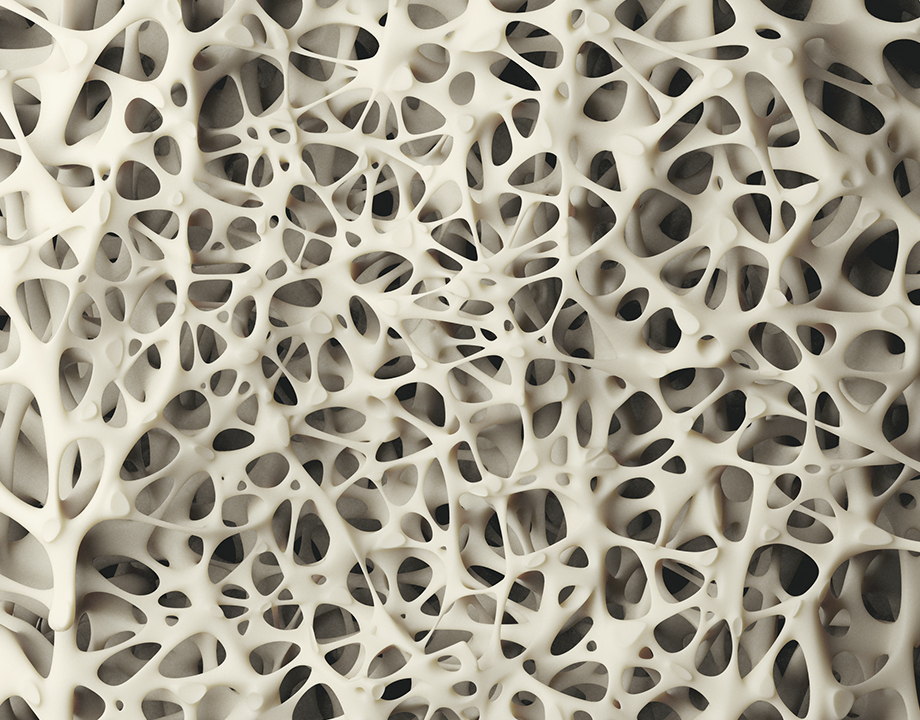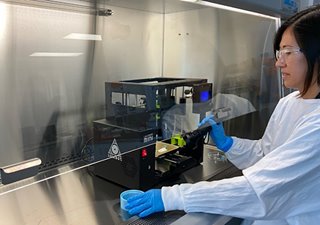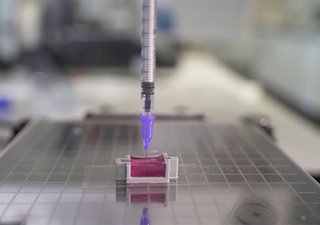Novel 3D-Printing Technique Could Hasten Bone-Graft Recovery
Novel 3D-Printing Technique Could Hasten Bone-Graft Recovery


New process mimics the body’s natural biomineralization process.
Engineers all over the world are convening on the best techniques for growing organs, tissues, and blood vessels using human cells–and they’re getting close to bringing their ideas to fruition. But, aside from the human body’s soft parts, bone remains a major area of uncharted territory in regenerative medicine.
Iman Roohani, a bioengineer at The University of New South Wales (UNSW) School of Chemistry, and Associate Professor Kristopher Kilian have developed a novel approach to 3D-printing bone-like structures using a ceramic-based ink.
Their technique, which they call ceramic omnidirectional bioprinting in cell-suspensions, mimics the body’s natural bone biomineralization process, in which the body produces minerals that crystallize over time to form new bone. This is a very slow process, not unlike stalactites in caves, which is why patients who experience trauma to their bones often face months of recovery or even reconstructive surgery.
Recommended for You: Biotechnology Anticipates 4D Printing
The first step would be to grow the patient’s cells in a bioreactor, followed by taking images of the affected area. The cells would then be deposited into a micro gel mix containing the ceramic-based ink, which comprises a calcium phosphate called hydroxyapatite. A 3D printer would then be used to print a matrix right onto the affected area. This matrix acts as a map, telling the cells how to form the bone.
What is unique about this ink, however, is that unlike 3D printing for soft tissues, the ink hardens within minutes when placed into a water-based solution or a soft bath. That would allow for a much quicker recovery process than the body could ever naturally do on its own.
“We can print really complex structures inside the bath,” said Kilian. “Thereby getting a very tight interface with the bone and the biological material right out of the gate.”
Watch Our Latest Video: Bioinspired Breakthroughs Transform Medical Devices
The process could be used for a number of applications, most notably to help patients who have experienced some kind of damage to their bone. The method often used in such situations is a bone graft, or autograft, which requires taking bone from one part of the body and transplanting it to the damaged area. This method has its limitations, including potential complications to the second site where the bone was removed. It’s also difficult to find enough viable bone in another part of the body when damage is severe, and in some of these cases, amputation is often the only option left.
“Autografts are very invasive and not always successful,” said Roohani. “It’s a big challenge in the orthopedic community.”
It’s important to note that aside from this technique, the only other methods for creating bone-like structures involve harsh and often toxic chemicals. In fact, the process usually looks like firing pottery in a kiln, requiring extremely high heat. Even if these artificial bones were to be implanted into a human, there’s a huge risk of rejection, which is why a 3D-printing technique like this that uses a patient’s cells is so attractive to the medical community.
But, Roohani explained, the technique has yet to be put to the test. Printing bone requires custom technology, including an injector that can withstand the special ink, as well as a custom bioreactor that can provide a viable environment for human bone cells to survive and expand. Thus far, it has only been practiced in microenvironments.
Read Our Bioengineering Blog: Hydrogel Holds Promise in Stopping Hemorrhaging
They’ll need a lot of funding to develop the technology, and then they’ll have to undergo animal studies before they can do human trials. Still, Roohani and Kilian are hopeful they can bring their technique to market, adding entire skeletal structures to 3D-printed tissue.
Cassie Kelly is a technology writer based in Groveport, Ohio.




.png?width=854&height=480&ext=.png)



